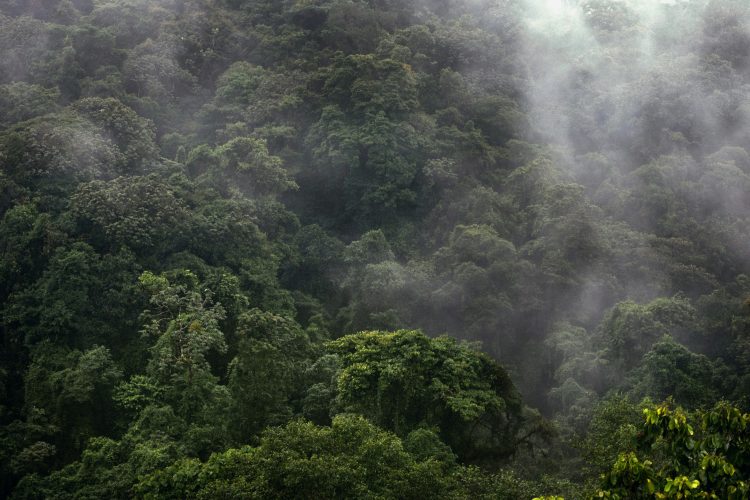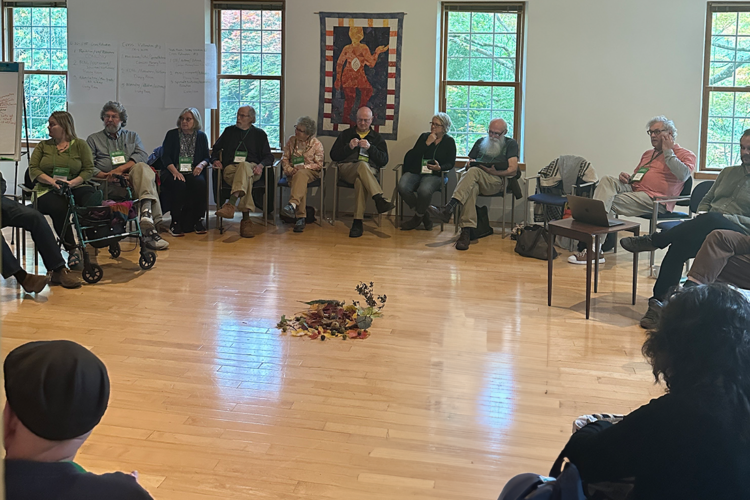A View from COP 19

In November, more than 8,000 people gathered in Warsaw to attend the UN Conference on Climate Change. The conference was known as COP 19, including the 19th Conference of Parties and the 9th Meeting of Parties to the Kyoto Protocol (COP19/CMP9) to the United Nations Framework on the Convention of Climate Change (UNFCCC).
These abbreviations reflect a massive and complex multilateral process with the ultimate objective of mitigating greenhouse gases (GHG) to prevent dangerous levels of human-induced climate change. It is a process that receives much criticism. It is also a process about far more than protecting our environment. The negotiations are rooted in economics, in the question of how to reduce GHG emissions within a global economic system heavily dependent on the burning of fossil fuels.
COP 19 opened with news of devastation from Typhoon Haiyan, alongside the clearest message yet from the scientific community: climate change is unequivocal, the unprecedented temperature rises are the result of man-made actions, and the global community is already two-thirds of the way through a “carbon budget” designed to keep global temperatures from rising more than 2 degrees centigrade above pre-industrial levels . Urgent addresses were given by the UNFCCC Executive Secretary Christiana Figueres, UN Secretary General Ban Ki-moon, scientists from the Intergovernmental Panel on Climate Change (IPCC), and the President of the UN General Assembly and many others.
Expectations for the Warsaw Conference were low, but there were several, unexpected achievements. Delegates agreed to establish an international financial mechanism to help protect the most vulnerable populations against loss and damage caused by extreme weather events. This was a compromise agreement; the agreed mechanism for Loss and Damage will fall under the framework of adaptation, but not, as many developing countries sought, under a concept of compensation for damage.
In addition, there was progress with the REDD+ programme to reduce deforestation. REDD+, however, is not without controversy; criticisms are levelled often at its “offsetting” approach and effect on indigenous communities. On this latter concern, negotiators agreed that REDD+ decisions should be adopted with assurance that, when referring to the drivers of deforestation, traditional livelihoods of indigenous peoples “should not be negatively affected.” Agreements were also made in relation to more “robust national forest monitoring systems,” information and frequency of presentation submissions.
The UNFCCC delegations are currently working on drafting by 2015 terms for a new, legally binding agreement. As delegations discussed preparations for this agreement, disagreements over wording delayed the closure of the COP by more than 24 hours. In the end, the word “contributions” was selected over “commitments,” with the following statement released by the UNFCCC Secretariat Press Office:
“In the context of 2015, countries decided to initiate or intensify domestic preparation for their intended national contributions towards that agreement, which will come into force from 2020. Parties ready to do this will submit clear and transparent plans well in advance of COP 21, in Paris, and by the first quarter of 2015.”
The Warsaw COP ended with a number of disappointments, and an intense level of frustration was reflected in a walk out by many non-governmental organizations (NGOs). Some have pointed out that this was the first COP to end with fewer mitigation pledges than existed at the start. In addition to low mitigation ambition, pledges for finance, technology transfer, and capacity-building resources were considered by many as insufficient. Developing countries stated repeatedly that both financial and technical support are essential in order to implement effective adaptation and, in turn, strengthen mitigation efforts. These countries also expressed deep mistrust over committing to a new agreement in 2015 without seeing pledges met from past agreements.
At present, the legally binding GHG reduction commitments under the Kyoto Protocol second commitment period (2013–2020) represent just over 13 percent of annual global emissions. New Zealand, Russia, and Japan have not taken on new targets for this period; Canada withdrew from the Kyoto Protocol in 2012; and the United States has never ratified it. Yet the political landscape of GHG emission rates is shifting since it was adopted by Parties to the UNFCCC in 1997. Developed countries are primarily responsible for the culmination of high levels of GHG emissions as a consequence of the industrial revolution. However, GHG emission rates are rising significantly among developing countries with fast growing economies. The dynamics of these new realities are being played out in the discussions.
There were also courageous voices among developing and developed countries in seeking ways forward; a number of delegates repeatedly reminded their peers that indecision would create new injustices, this time for future generations. Many negotiators, like those of us observing the process, view climate change as one of the most profound challenges facing humanity. However, they are representing their governments, and a prevailing concept that reducing GHG emissions negatively affects economic interests. A number of countries are championing the view that investment in mitigation, such as in renewable energy systems, stimulates both economic growth and addresses urgent action to avoid long term economic, political, social and environmental crises.
There are many ways to face the challenge of climate change positively, at the grassroots and the international level. At QUNO Geneva, our support of the UNFCCC includes offering safe, off-the-record spaces for delegates at the negotiations to meet, exchange ideas, and build bridges and trust. We continue into 2014 and 2015 with this work, step by step.

